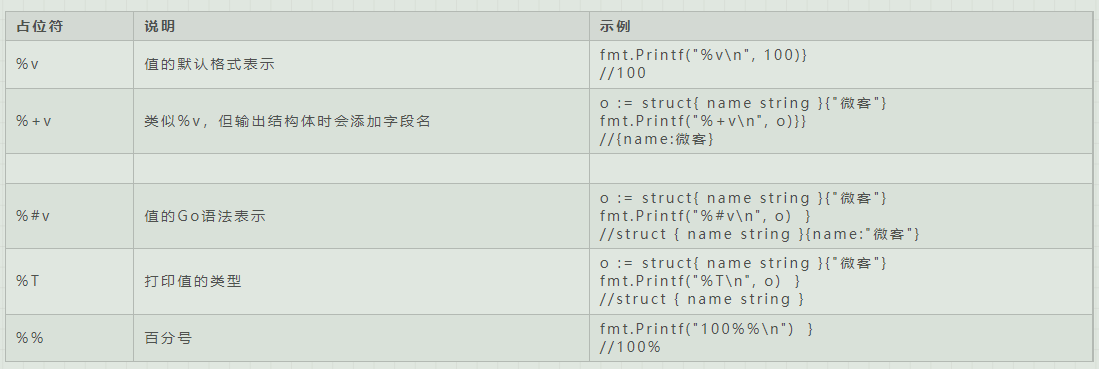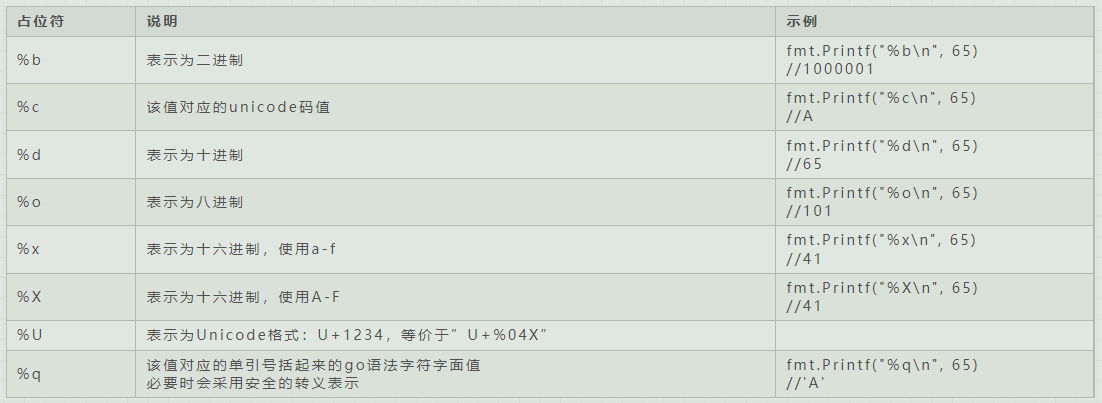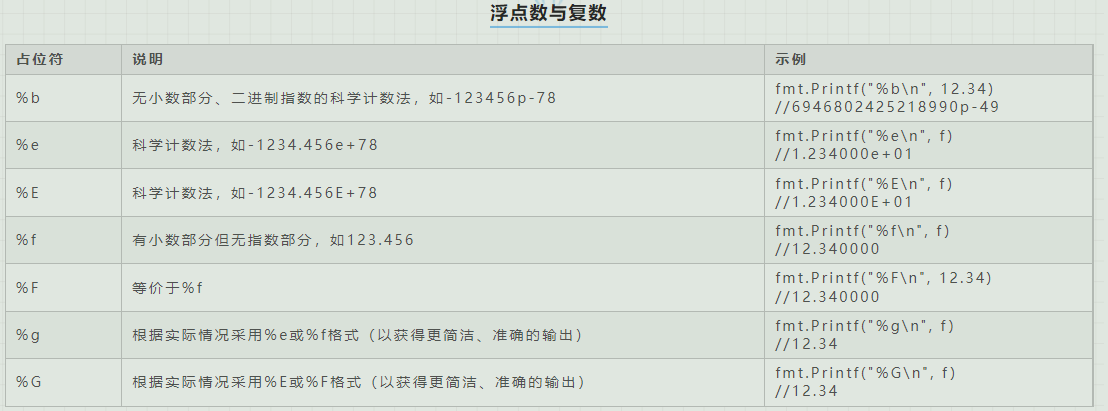01-Go格式化占位符汇总
文章目录
Go格式化占位符汇总
1:占位符 placeholder
1.1 通用占位符 placeholder
| |
1.2 整形占位符 placeholder
| |
1.3 浮点数与复数 placeholder
| |
1.4 字符串和[]byte placeholder
| |
1.5 pointer
| |
1.6 宽度标识符 placeholder
| |
1.7 其他 flag
| |
2:go 占位符




![字符串和[]byte](/images/Snipaste_2021-12-21_10-19-22.png)



文章作者 lucas
上次更新 2021-04-17
| |
| |
| |
| |
| |
| |
| |




![字符串和[]byte](/images/Snipaste_2021-12-21_10-19-22.png)



文章作者 lucas
上次更新 2021-04-17